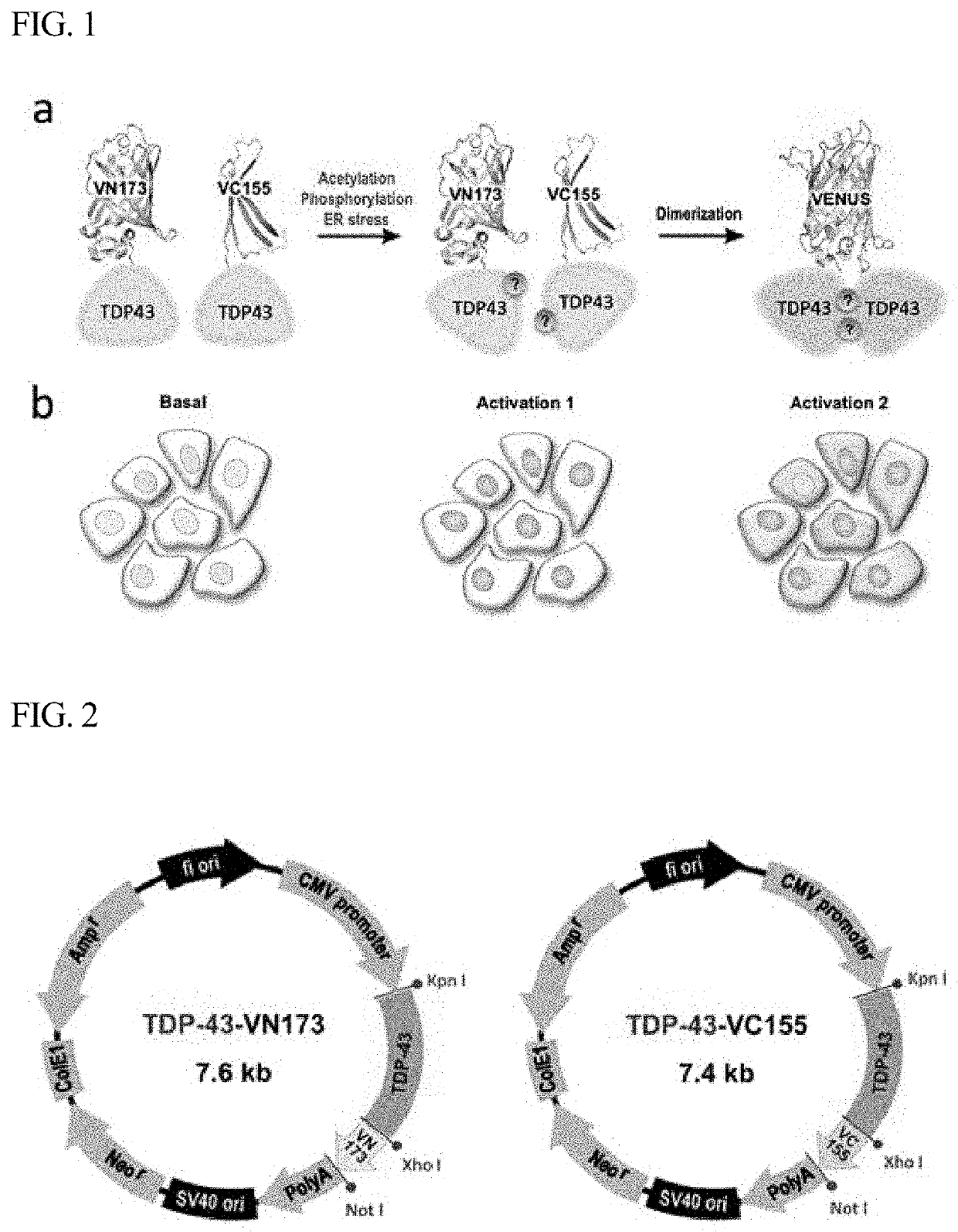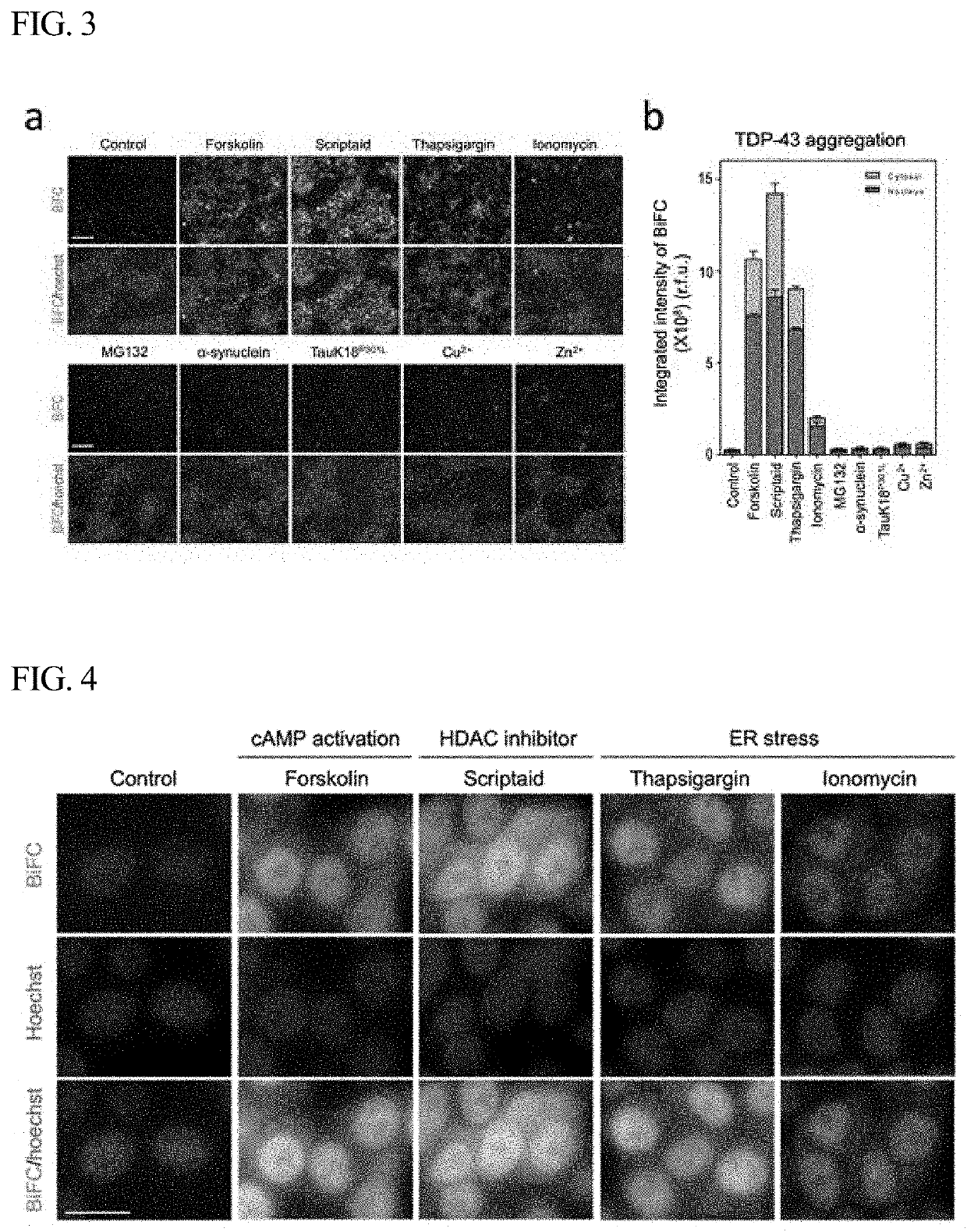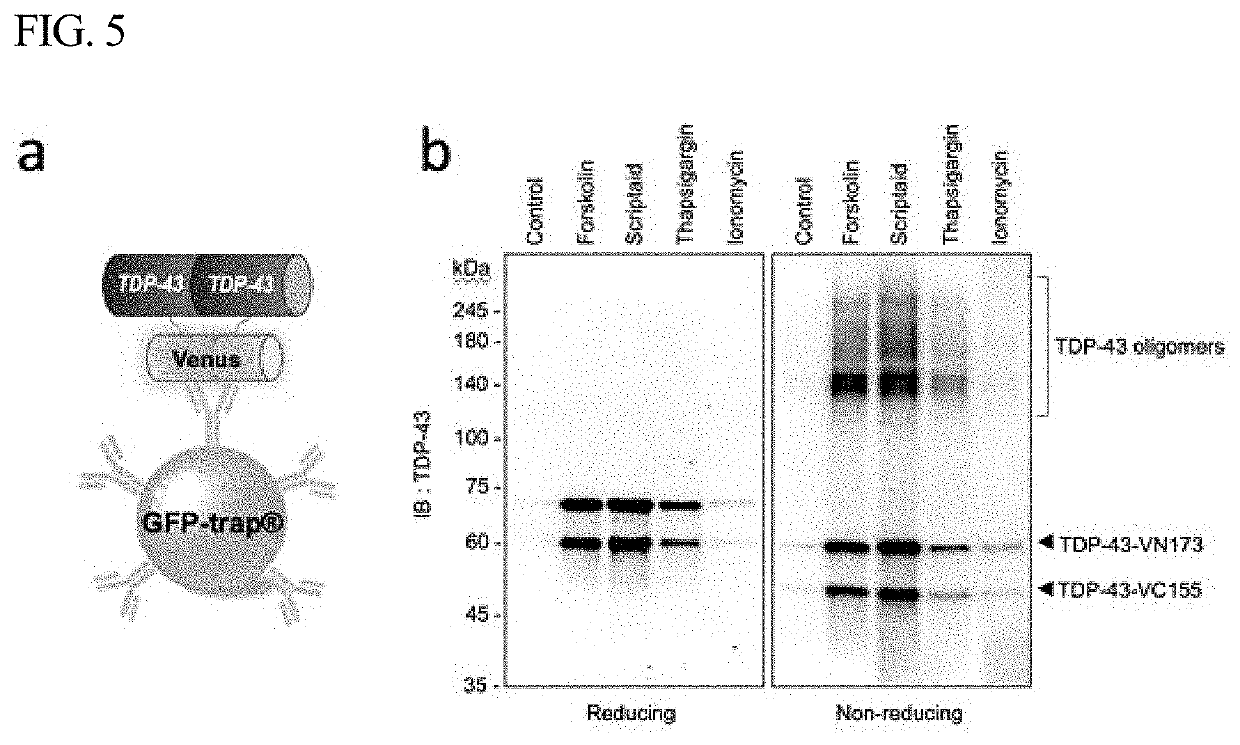A pair of amino acid sequences for monitoring formation of tdp-43 oligomer in living cells via bimolecular fluorescence complementation
a technology of bimolecular fluorescence and amino acid sequences, which is applied in the field of amino acid sequence pairs for monitoring the interaction of tdp43 in cells via bimolecular fluorescence complementation, can solve the problems of inability to accurately identify the formation of original oligomers, and inability to regulate ptms, etc., and achieves the effect of increasing fluorescen
- Summary
- Abstract
- Description
- Claims
- Application Information
AI Technical Summary
Benefits of technology
Problems solved by technology
Method used
Image
Examples
examples
[0044]1. Construction of TDP-43-BiFC Sensor
[0045]FIG. 1a shows the principle according to which TDP-43 fused to the Venus protein BiFC acts as a Venus fluorescence turn-on sensor that shows TDP-43 interaction induced by PTM or intracellular stress. In a normal state, TDP-43 is present mainly in the nucleus, but when abnormal aggregation of TDP-43 is induced by various factors, including phosphorylation, fragmentation, acetylation, ubiquitination, cysteine residue oxidation, and SUMOylation, TDP-43 forms insoluble aggregates in the cytoplasm. FIG. 1b is a schematic view showing an increase in BiFC fluorescence and a change in the distribution of BiFC fluorescence in TDP-43-BiFC cells in a normal state and an aggregation-induced state.
[0046]FIG. 2 is a vector map of a pCMV vector, which shows two plasmids having BiFC labeled at the C-terminus of TDP-43. In order to develop a TDP-43-BiFC cell line, the TDP-43-VN173 and TDP-43-VC155 constructs shown in FIG. 2 were co-transfected into HE...
PUM
| Property | Measurement | Unit |
|---|---|---|
| fluorescence | aaaaa | aaaaa |
| length | aaaaa | aaaaa |
| bimolecular fluorescence complementation | aaaaa | aaaaa |
Abstract
Description
Claims
Application Information
 Login to View More
Login to View More - R&D
- Intellectual Property
- Life Sciences
- Materials
- Tech Scout
- Unparalleled Data Quality
- Higher Quality Content
- 60% Fewer Hallucinations
Browse by: Latest US Patents, China's latest patents, Technical Efficacy Thesaurus, Application Domain, Technology Topic, Popular Technical Reports.
© 2025 PatSnap. All rights reserved.Legal|Privacy policy|Modern Slavery Act Transparency Statement|Sitemap|About US| Contact US: help@patsnap.com



